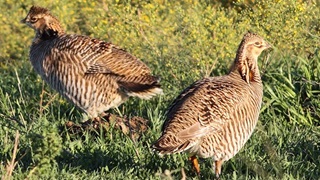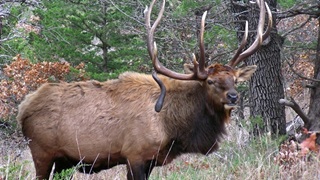Restoring a ‘treasure of biodiversity’ at the southern tip of Texas
Friends of the Wildlife Corridor use green-thumb commerce to reintroduce wildlife habitat in Magic Valley
In the early 20th century, land developers in the Lower Rio Grande Valley nicknamed the area Magic Valley, marketing it as a mythical place with abundant opportunities for development.
The nickname proved especially fitting, given the area’s natural phenomena. Four climate zones meet in this region at the southern tip of Texas—the temperate, desert, coastal and sub-tropical zones—and as a result, myriad bird and butterfly species are drawn to the habitat.
The marketing campaign worked. These days, this four-county spread is one of the fastest growing regions in the United States.
It’s a place where more and more people put down their roots—but, as a result, “more than 95 percent of native habitat in the area has been lost to agriculture and urban development,” says Sharon Slagle, board secretary and grants coordinator of the Friends of the Wildlife Corridor.
The organization supports two regional refuges, whose territories consist of more than 100,000 acres of isolated tracts of land that follow the lower 275 miles of the Rio Grande River along the Mexican border. The area is home to 530 bird species and 330 North American butterfly species—and they all rely on rapidly disappearing habitat.
To restore indigenous plants to the region, which Slagle calls a “treasure of biodiversity,” the Friends of the Wildlife Corridor have cultivated some good old-fashioned green-thumb commerce—they’ll hold plant sales to encourage local landowners to use native plants in their landscaping, thereby increasing critical habitat for birds and butterflies.
The Lower Rio Grande Valley National Wildlife Refuge will donate 1,500 plants from its nurseries for each sale, the first of which will be held in the fall of 2017. In exchange, proceeds from the sales will support the refuge.
“The refuge’s ultimate goal is to connect all of these isolated tracts of land into a corridor,” Slagle says.
The plant sales have already led to a new partnership with a local troop of the Boy Scouts of America, who will help pot the plants and volunteer at the sale in exchange for 50 percent of the profits.
To help launch the plant sales, the Friends applied for a grant through the National Fish and Wildlife Foundation’s (NFWF) Refuge Friends program. Enbridge, as the first private partner in this NFWF program, awarded a grant of $4,950 to the Friends of the Wildlife Corridor for weatherproof educational signs to be used in public outreach.
“The Friends have come up with a great way to get people involved in habitat conservation,” says Cindy Finch, who manages Enbridge’s U.S. community investment activities. “Community residents will learn the value of the native plants—and, by planting them and caring for them, join the refuge in restoring critical habitat for wildlife.”
Residents working together to conserve habitat—it’s just one more way Magic Valley proves itself worthy of the nickname.










